Below are seven paintings of plants and flowers, each produced on paper by a member of the Royal Watercolour Society. You will notice that each artist has their own, very distinct style, using materials in a way that is natural to them so their marks are their recognisable handwriting.
What is your natural style of painting? Maybe you try to make paintings that are life-like, or maybe you like to abstract a little, or a lot! Do you aim to record lots of detail or just the essence of your subject? Do you use the colours that you see in front of you, or do you prefer to choose your own colours? How thick or thin do you like to apply paint? What is the mood of your work? What brushes are you drawn to using? Do you find yourself experimenting with your materials or do you prefer to stick to the ‘rules’? Are you a realist, or do you prefer to create your own reality?
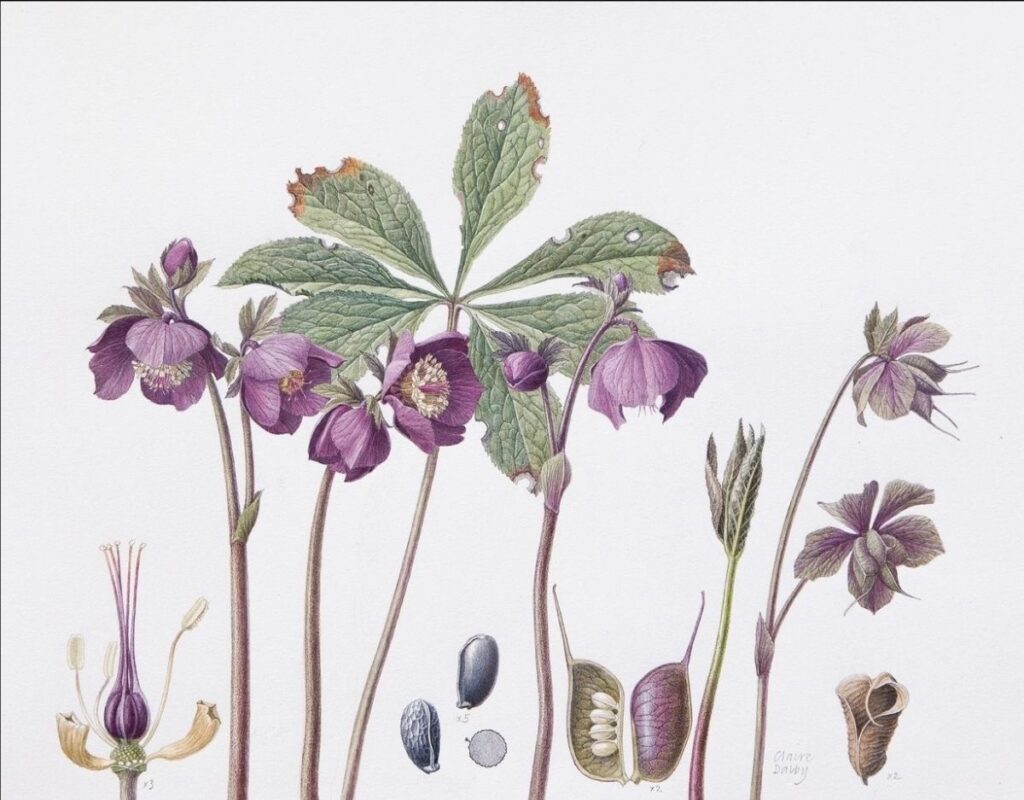
Dalby’s watercolour painting above accurately records every part of the leaves, stems and seeds. It is scientific and informative. Every detail has been painted exactly, including the patterns on the various surfaces, the colours and the surface textures.
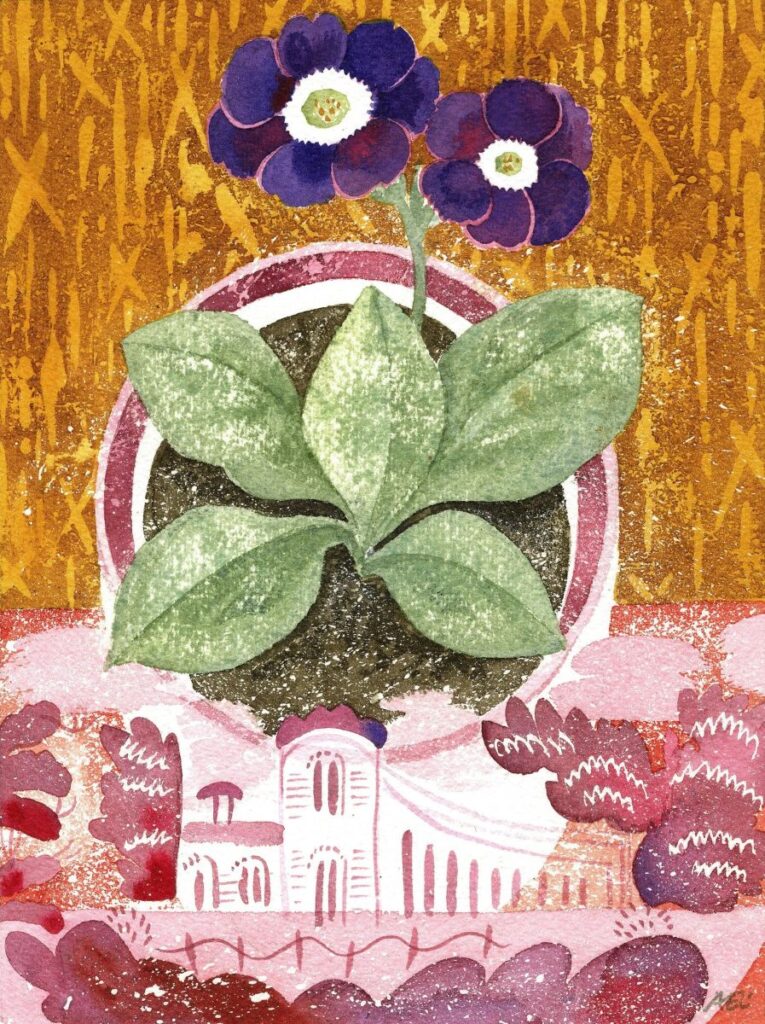
Lewin’s Cubist-like watercolour composition is constructed from different viewpoints, including what looks like the pattern on the side of the pot opened out like a scroll at the bottom of the picture. Paint has been applied using flat, wet on dry washes, and texture has been created all over with the use of masking fluid.
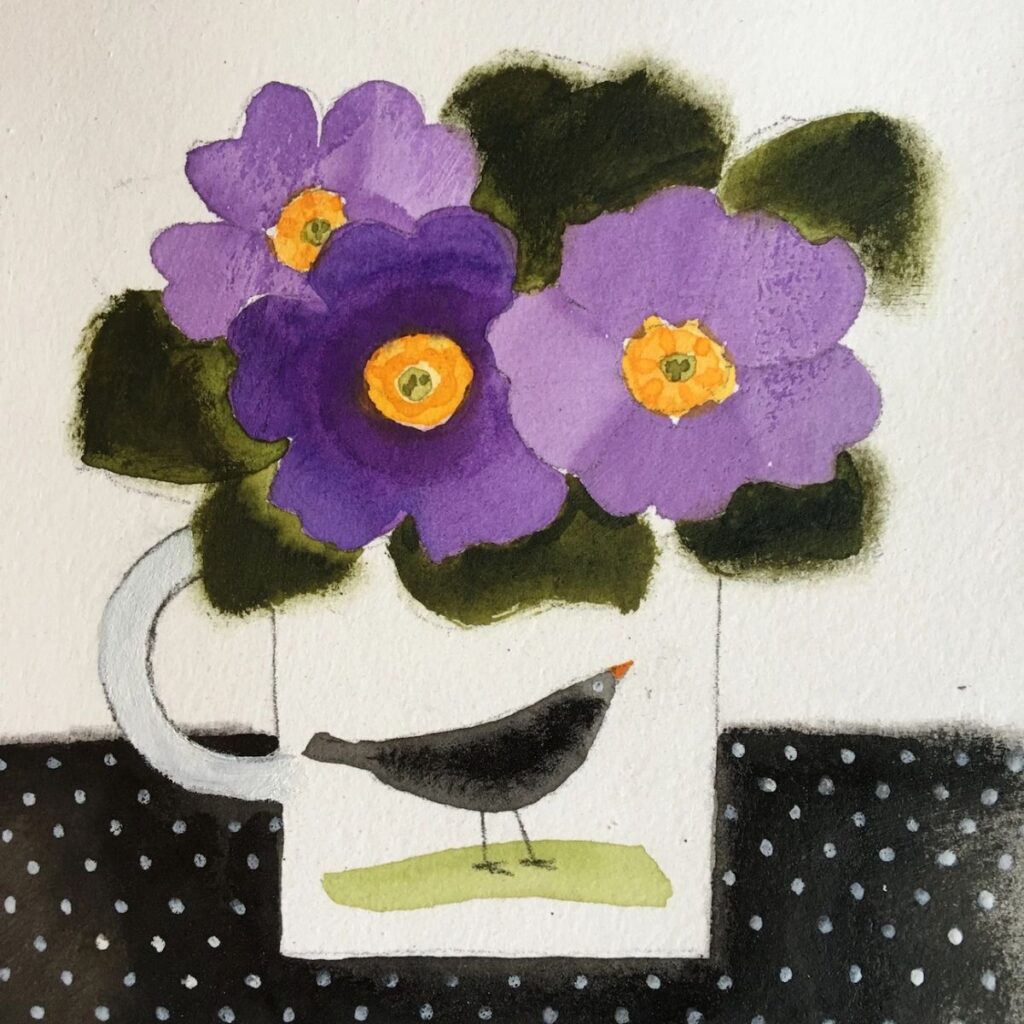
Past President of the RWS, Jill Leman, has produced a joyful watercolour painting in a quirky naive style, using washes and some thicker opaque paint. It is very much about composition, design and pattern.
You might like to also look at the artist Alfred Wallis
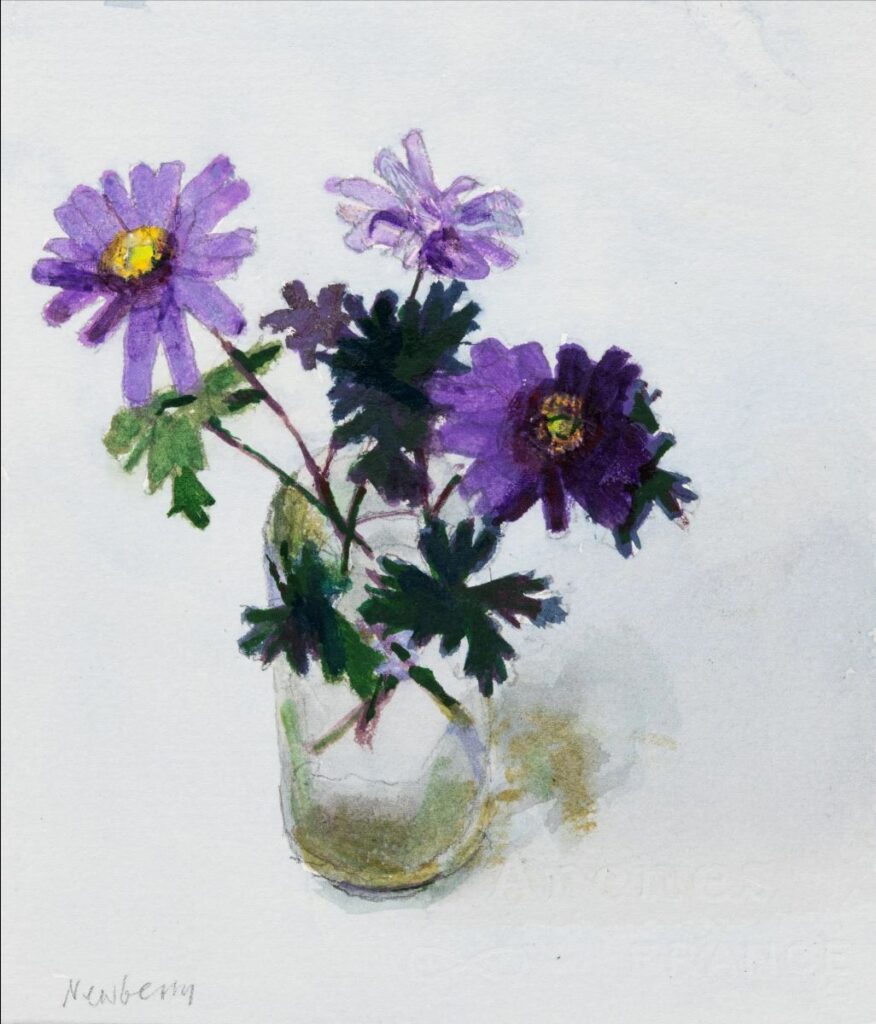
Newbury’s subtle, watery, delicate painting is lightly drawn out in pencil before dropping intense colours of paint into the petal and leaf spaces. Each wash has been patiently left to dry to avoid one colour running into another, whereas at the pot, colours merge and smudge into each other whilst still wet.
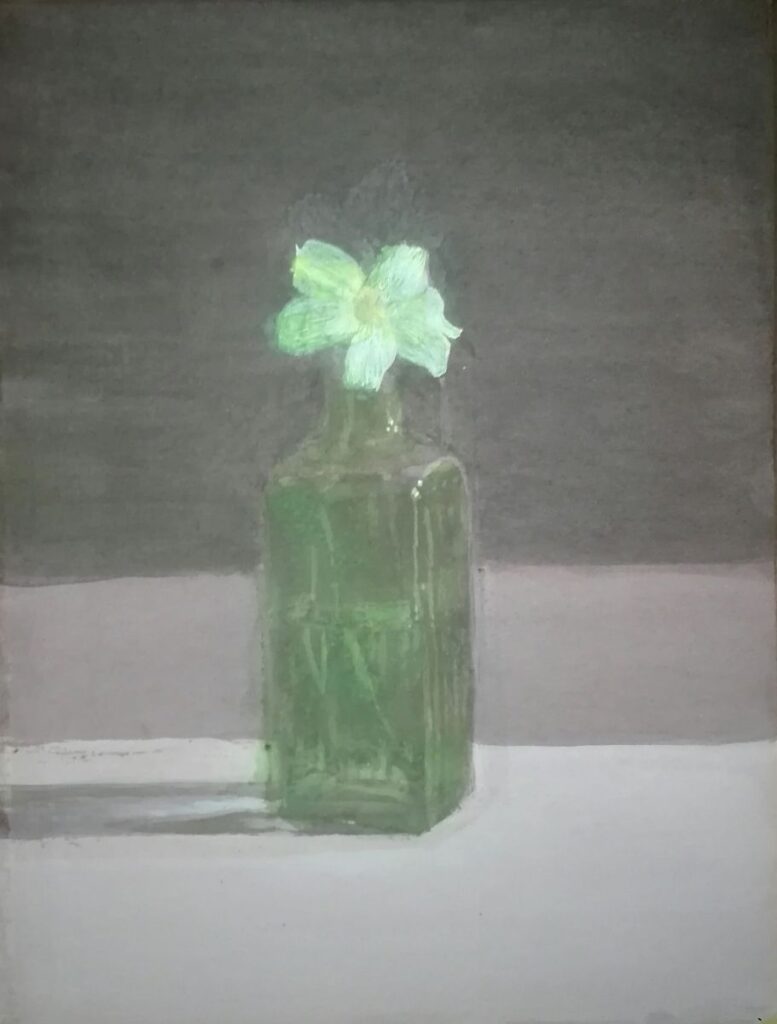
Cameron’s watercolour painting could be mistaken for being painted with gouache due to the opaque areas. The bright flower is illuminated by the darker background, where as the table surface is light, to show off the base of the bottle. How were the marks that describe the stems inside the bottle made? Masking fluid? Painted on with a thin, rigger brush? Or, as Turner used to do, scratch into the wet paint with their nail?
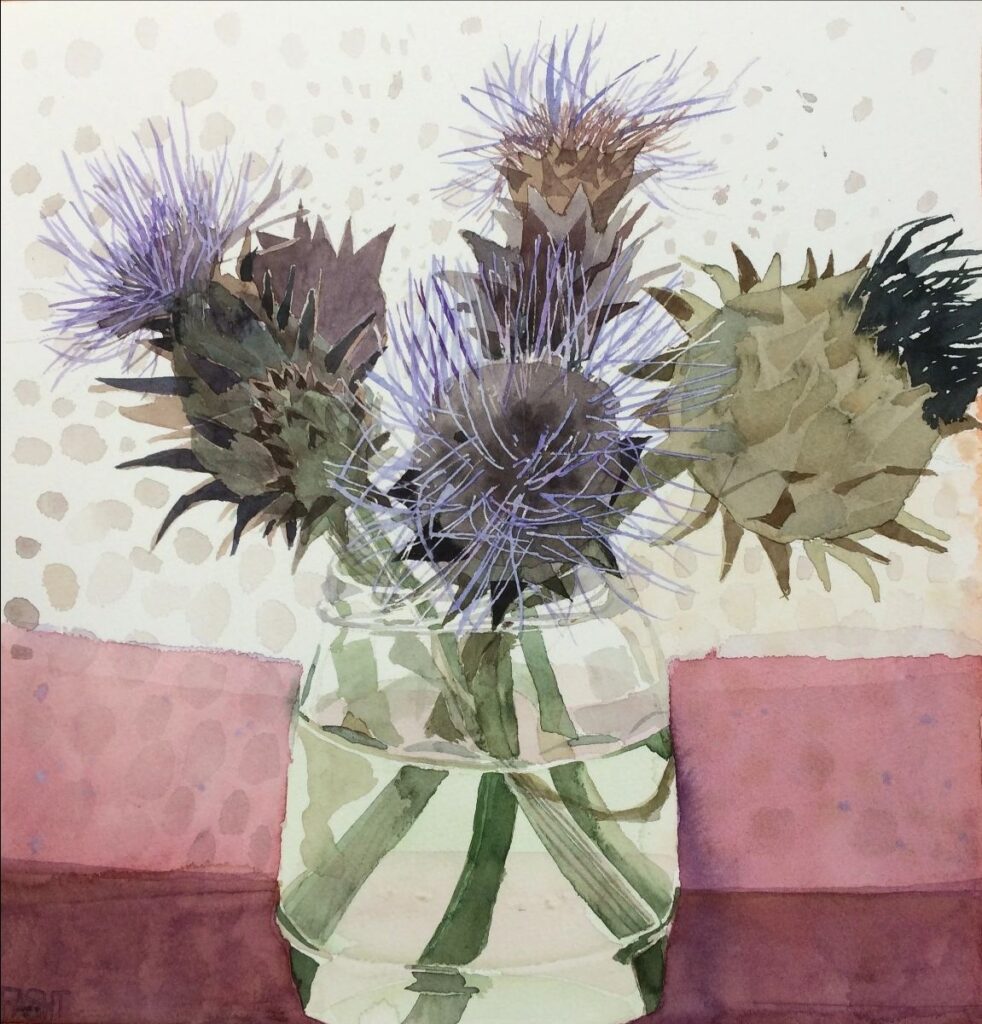
Fasht has painted a bold composition using the traditional watercolour technique of building up transparent, wet on dry layers, from light to dark, with thin lines of masking fluid used to create spaces for the purple hairs.
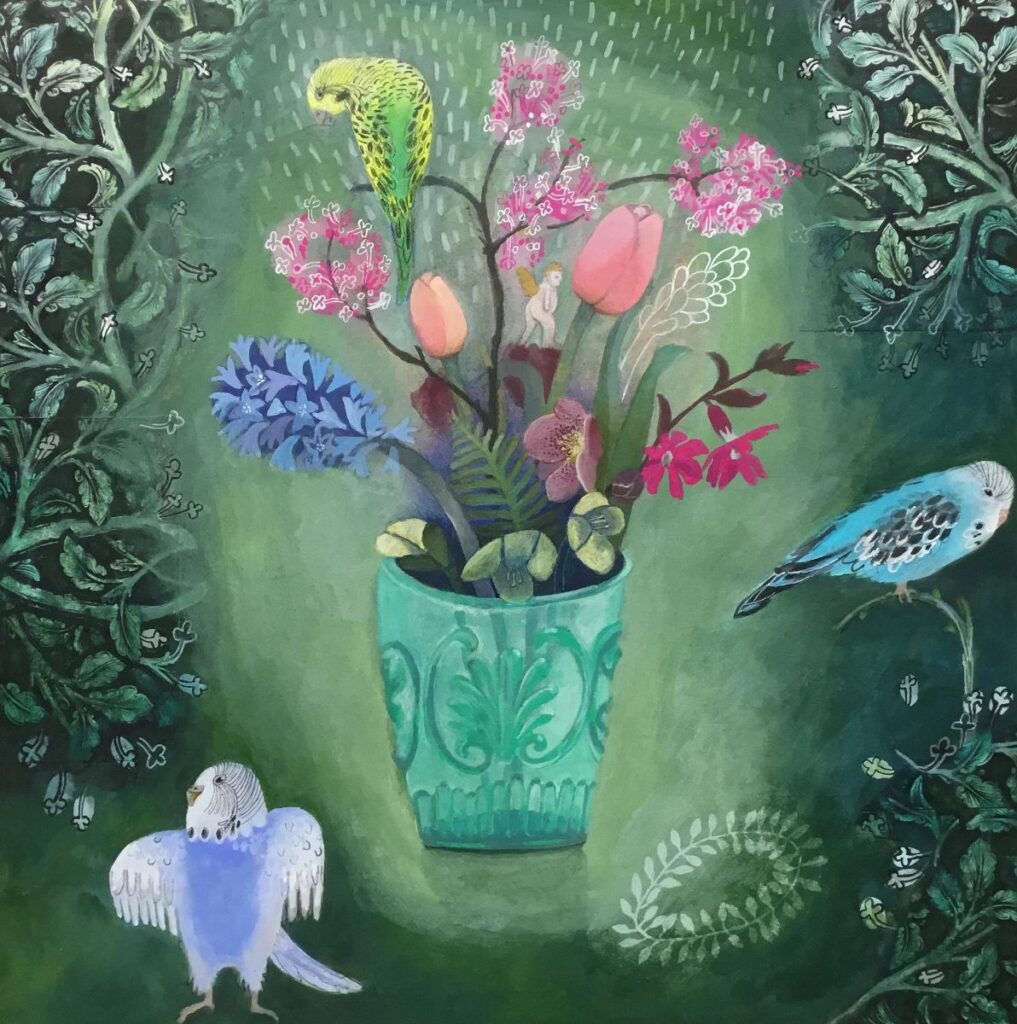
Young’s mixed media paintings are fun, playful, and full of colour. This collage, watercolour, gouache and pencil on card piece has the vase of flowers positioned centrally, however, she has let her imagination run wild with the addition of three budgies and decorative foliage down either side.